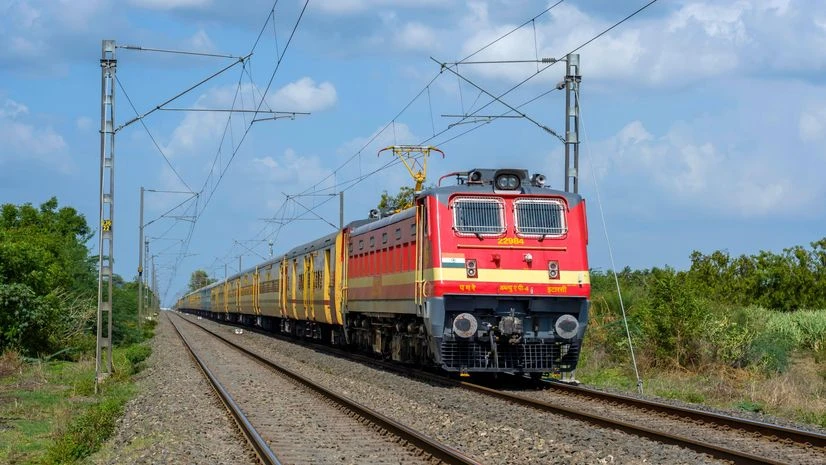As Union Finance Minister Nirmala Sitharaman prepares to present the Union Budget 2025 on Saturday, one key area drawing attention is the subsidy on train fares in India. Indian Railways has long relied on government support to keep travel affordable for millions of passengers.
But just how subsidised are the fares?
Role of subsidies in Indian Railways’ passenger fares
Indian Railways, the country’s largest public transport system, heavily subsidises train fares, particularly for senior citizens, students, and people with disabilities. While the per-ticket subsidy is not explicitly detailed in official reports, Indian Railways receives substantial financial backing from the government each year to cover these losses. This support ensures that fares—especially for non-premium trains—remain lower than actual operational costs.
Instead of a direct per-ticket breakdown, the subsidy is reflected in the overall operational losses incurred by the passenger segment.
How much subsidy is provided on train tickets?
During a Parliament session in December 2024, Railway Minister Ashwini Vaishnaw revealed that Indian Railways provides an annual subsidy of Rs 56,993 crore, effectively offering a 46 per cent discount on every ticket.
Also Read
For instance, if a ticket is priced at Rs 100, passengers pay only Rs 54, with the remaining cost covered by the subsidy. This financial support aims to keep rail travel accessible, particularly for economically disadvantaged sections.
In the Union Budget 2023-24, the government allocated Rs 59,837 crore to compensate Indian Railways for losses incurred due to subsidised fares. ALSO READ: Railways gives Rs 56,993 cr subsidy on tickets every year
Categories of train fare subsidies
Indian Railways offers various concessions to ensure affordable travel for vulnerable groups:
- Senior citizens: Men aged 60 and above receive a 40 per cent discount, while women aged 58 and above get a 50 per cent concession.
- Students: Discounts on season tickets for travel between home and educational institutions.
- Persons with disabilities (Divyangjan): Concessions range from 50 per cent to 75 per cent, depending on the class of travel.
- Patients: Discounts on train fares for those travelling to medical facilities.
Additionally, specific subsidies are available for war widows, journalists, and railway employees.
Infrastructure and capital subsidies
Beyond passenger ticket subsidies, the government provides substantial financial support for railway infrastructure development. This includes funding for new railway lines, station modernisation, and large-scale projects such as the Mumbai-Ahmedabad bullet train and railway electrification. These initiatives are often backed by direct government funding or loans.
Indian Railways vs European rail systems
When it comes to subsidising train tickets, Indian Railways and European rail systems follow different financial models, shaped by their respective transportation needs and budgetary priorities.
Indian Railways subsidy model
Indian Railways operates on a heavy subsidy model to keep fares affordable for the majority of passengers. A key aspect of this model is cross-subsidisation, where freight revenue helps offset passenger service losses. This means freight operations—typically more profitable—help subsidise travel costs, particularly in lower classes such as sleeper and unreserved coaches.
In addition to cross-subsidisation, the Indian government directly funds Indian Railways, allocating a significant portion of the budget to cover passenger service losses. The primary objective is to ensure accessible transportation for India’s vast population, especially lower-income groups.
European rail subsidy models
European rail systems, including those in Germany, France, and the UK, follow a different approach. While governments heavily subsidise rail services, the focus is less on keeping fares extremely low and more on maintaining service quality and infrastructure.
Unlike India, where subsidies target specific passenger categories, European subsidies primarily support railway infrastructure, reduce operational costs, and ensure the sustainability of regional and less profitable routes.
Examples of European rail subsidies:
Germany: Deutsche Bahn received €4.5 billion in government subsidies in 2021 for both regional and long-distance services.
France: SNCF (France’s national railway) received €13.7 billion in government support in 2020, primarily for infrastructure maintenance and regional services.
UK: During the Covid-19 pandemic, the UK government provided €12 billion to sustain rail services despite reduced passenger numbers.
While European countries also offer discounts for seniors, students, and frequent travellers, their subsidies are not designed to keep fares as low as those in India. Instead, they focus on high-quality services, reducing carbon footprints, and promoting rail travel over road and air transport.
Railways Budget 2024 highlights
In the Union Budget 2024-25, the railways received a record capital expenditure (capex) allocation of Rs 2.65 trillion, a marginal 2 per cent increase from the previous year’s Rs 2.6 trillion revised estimate.
Of this, Rs 2.52 trillion came from government budgetary support, marking a 5 per cent rise. Other sources included Rs 10,000 crore from extra-budgetary resources, Rs 3,000 crore from internal funds, and Rs 200 crore from the Nirbhaya Fund.
Railways Budget 2025 expectations
With Indian Railways’ operating ratio set at 98.22 per cent—meaning it spends Rs 98.22 for every Rs 100 earned—financial health remains a concern.
As capital expenditure continues to expand, the budgetary allocation for 2025-26 is expected to rise to Rs 2.9-3 trillion, according to reports.
Finance Minister Nirmala Sitharaman is set to present the Union Budget for 2025-26 on February 1, marking her eighth consecutive budget presentation.

)